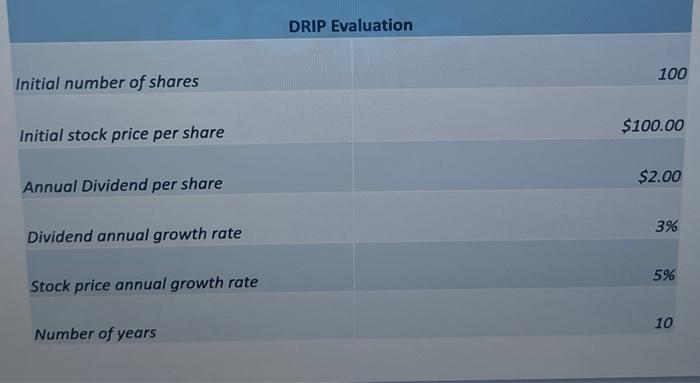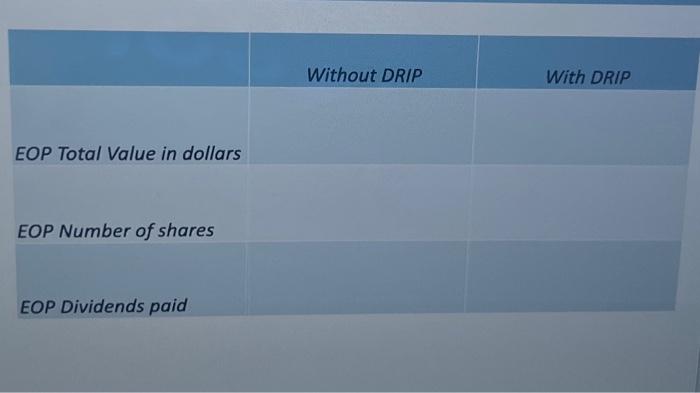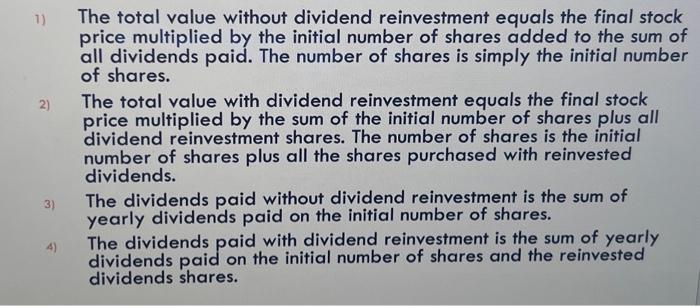Answered step by step
Verified Expert Solution
Question
1 Approved Answer
FILL IN THE BLANKS (EOP total value, shares, and dividends) with AND without DRIP. use excel for all calculations and provide all formulas for a
FILL IN THE BLANKS (EOP total value, shares, and dividends) with AND without DRIP.
DRIP Evaluation Initial number of shares 100 Initial stock price per share $100.00 Annual Dividend per share $2.00 Dividend annual growth rate 3% Stock price annual growth rate 5% Number of years 10 Without DRIP With DRIP EOP Total Value in dollars EOP Number of shares EOP Dividends paid 1) The total value without dividend reinvestment equals the final stock price multiplied by the initial number of shares added to the sum of all dividends paid. The number of shares is simply the initial number of shares. 2) The total value with dividend reinvestment equals the final stock price multiplied by the sum of the initial number of shares plus all dividend reinvestment shares. The number of shares is the initial number of shares plus all the shares purchased with reinvested dividends. 3) The dividends paid without dividend reinvestment is the sum of yearly dividends paid on the initial number of shares. 4) The dividends paid with dividend reinvestment is the sum of yearly dividends paid on the initial number of shares and the reinvested dividends shares. DRIP Evaluation Initial number of shares 100 Initial stock price per share $100.00 Annual Dividend per share $2.00 Dividend annual growth rate 3% Stock price annual growth rate 5% Number of years 10 Without DRIP With DRIP EOP Total Value in dollars EOP Number of shares EOP Dividends paid 1) The total value without dividend reinvestment equals the final stock price multiplied by the initial number of shares added to the sum of all dividends paid. The number of shares is simply the initial number of shares. 2) The total value with dividend reinvestment equals the final stock price multiplied by the sum of the initial number of shares plus all dividend reinvestment shares. The number of shares is the initial number of shares plus all the shares purchased with reinvested dividends. 3) The dividends paid without dividend reinvestment is the sum of yearly dividends paid on the initial number of shares. 4) The dividends paid with dividend reinvestment is the sum of yearly dividends paid on the initial number of shares and the reinvested dividends shares use excel for all calculations and provide all formulas for a thumbs up 





Step by Step Solution
There are 3 Steps involved in it
Step: 1

Get Instant Access to Expert-Tailored Solutions
See step-by-step solutions with expert insights and AI powered tools for academic success
Step: 2

Step: 3

Ace Your Homework with AI
Get the answers you need in no time with our AI-driven, step-by-step assistance
Get Started


